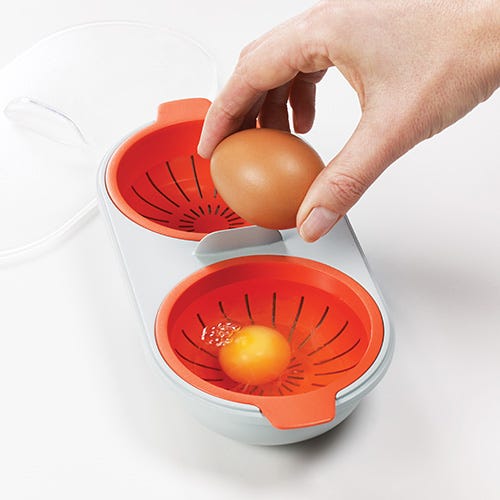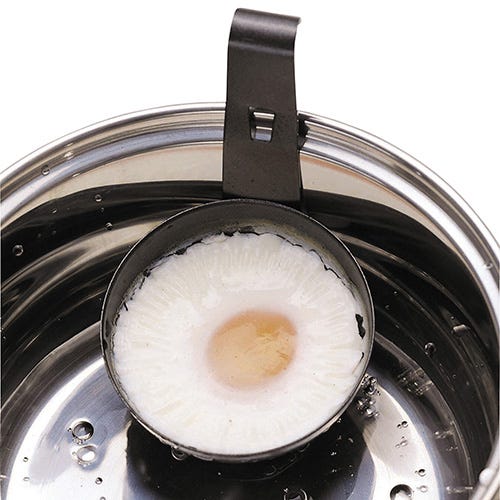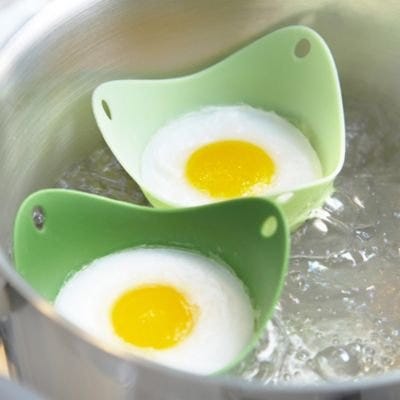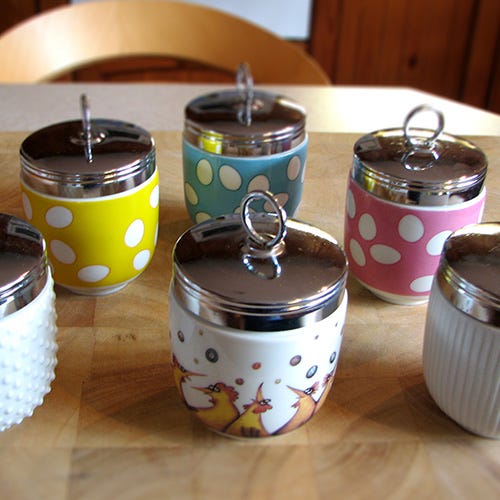A Guide to Poaching Eggs and Egg Poachers
Categories:
I hold myself as a bit of a dab hand in the kitchen. Able to rustle up something tasty from even the saddest looking items in the fridge, especially when an extra dinner guest appears unannounced! Even at lunchtime, I like to cook quickly and healthily. More often than not I reach for an egg - scrambled, an omelette or even a cheeky pancake. However, no matter how hard I try I just cannot poach eggs! Which to me is the most annoying thing, as they are my absolute favourite and always my first choice treat when having breakfast in a hotel. Inspired by some of the best chefs and studying many books in the hope of improving the poaching situation, like whirling the water round to create a whirlpool, adding vinegar to the pan and even dropping the egg in gently with a ladle, all I achieve is a mess. The solution for me is some very handy kitchen gadgets now available here at Harts of Stur to achieve poaching perfection.
Microwave Egg Poachers
Microwave poachers are great as they are easy to use and quick if on a lunch break or for a quick snack. Break the egg into the cups with a dash of water and pop in the microwave. The egg is cooked quickly and the mess is easy to deal with after cooking by popping the egg poacher into the dishwasher or washing by hand.
as they are easy to use and quick if on a lunch break or for a quick snack. Break the egg into the cups with a dash of water and pop in the microwave. The egg is cooked quickly and the mess is easy to deal with after cooking by popping the egg poacher into the dishwasher or washing by hand.
Poaching Pans
Poaching pans have a platform inside the pan for the poaching cups to rest in, these pans can vary from 4 eggs up to 6. Water is added to the pan which sits underneath the platform in which the cups are partially submerged. Once removed the cups can be easily cleaned by hand or in the dishwasher. A bonus of this type of pan is that the platform can be removed and it can be used as a regular sauté pan.
Pan Poachers
Pan poachers are small cups that clip onto the side of your existing saucepan, either singly or in pairs. They allow the cracked egg to sit in the non-stick cup while the cup is submerged into the boiling water for poaching. After the egg is poached the cups easily unclip from the edge of the pan and can be hand washed or go in the dishwasher for cleaning.
that clip onto the side of your existing saucepan, either singly or in pairs. They allow the cracked egg to sit in the non-stick cup while the cup is submerged into the boiling water for poaching. After the egg is poached the cups easily unclip from the edge of the pan and can be hand washed or go in the dishwasher for cleaning.
Poachies
Poachie bags allow the egg to be submerged in boiling water keeping the egg contained during poaching. The bags are slightly porous, so the water can touch the egg but the raw egg cannot leak out into the water. The egg is cracked into the bag and once your pan of water is boiled, the bag is submerged into the water. After cooking for 6 minutes, the egg can be gently tipped from the bag and served straightaway.
Poachpods
Poachpods are made from soft silicone allowing them to be lightweight and float, the purpose for which they were intended. Although non-stick, it is recommended that the poachpod is oiled before breaking your egg into it. The Poachpods with egg on board will then float happily in the boiling water for 4-6 minutes, depending on your yolk preference. Once cooked, simply turn the pod upside-down and the egg will come away from the pod.
soft silicone allowing them to be lightweight and float, the purpose for which they were intended. Although non-stick, it is recommended that the poachpod is oiled before breaking your egg into it. The Poachpods with egg on board will then float happily in the boiling water for 4-6 minutes, depending on your yolk preference. Once cooked, simply turn the pod upside-down and the egg will come away from the pod.
Coddlers
Coddling eggs is an old tradition that has been modernised in design to suit our current cooking methods. The egg coddler is a porcelain cup with a stainless steel screw top lid. Prepare the coddler by oiling the inside before breaking in 1-2 eggs, the beauty of the coddler is that you can add seasoning and other ingredients at this point, if you would like some ideas on this then you should visit our handy guide to egg coddlers - A doddle to coddle. Once you are ready, put the lid on the coddler and place the coddler in boiling water. After 8-10 minutes, depending on how you like your eggs, remove the coddler from the water (with a cloth as it will be very hot) and remove the lid. Your egg snack can be eaten straight out of the coddler. There are so many great methods to choose from and sometimes, one method will suit you over another. Enjoy the experimental process and always remember that the key to the perfect poached egg is always how fresh your egg is….
old tradition that has been modernised in design to suit our current cooking methods. The egg coddler is a porcelain cup with a stainless steel screw top lid. Prepare the coddler by oiling the inside before breaking in 1-2 eggs, the beauty of the coddler is that you can add seasoning and other ingredients at this point, if you would like some ideas on this then you should visit our handy guide to egg coddlers - A doddle to coddle. Once you are ready, put the lid on the coddler and place the coddler in boiling water. After 8-10 minutes, depending on how you like your eggs, remove the coddler from the water (with a cloth as it will be very hot) and remove the lid. Your egg snack can be eaten straight out of the coddler. There are so many great methods to choose from and sometimes, one method will suit you over another. Enjoy the experimental process and always remember that the key to the perfect poached egg is always how fresh your egg is….
